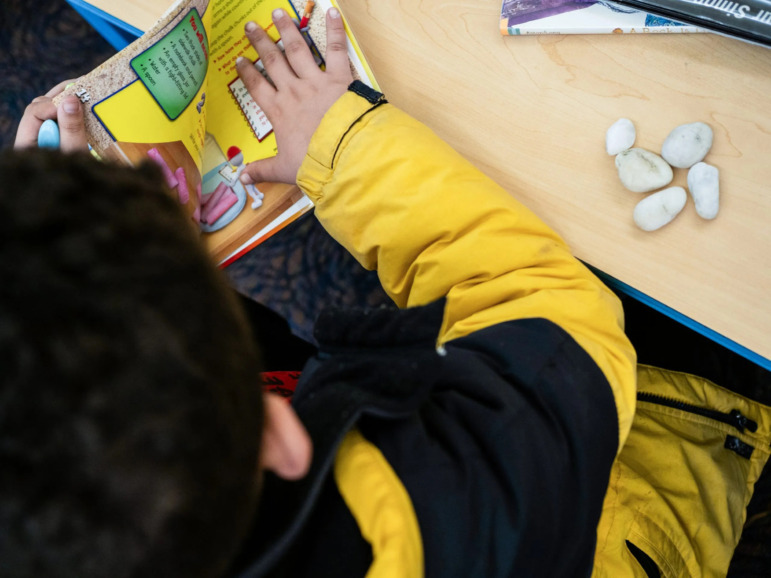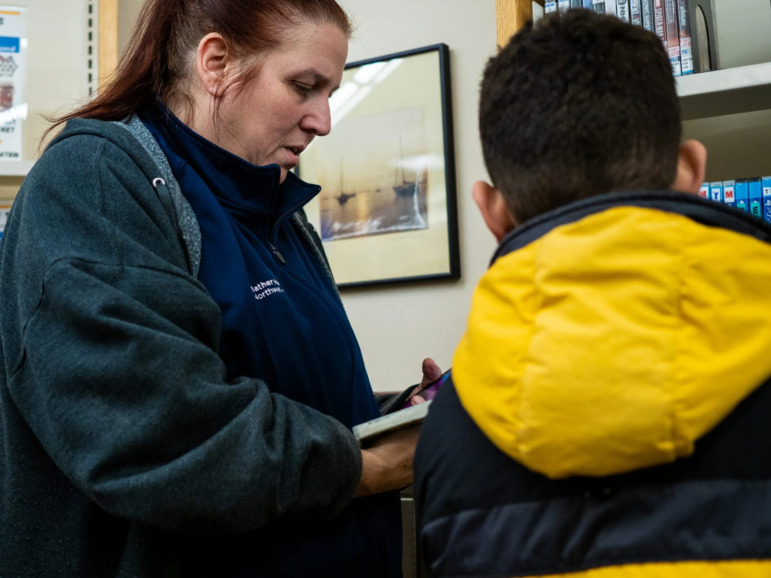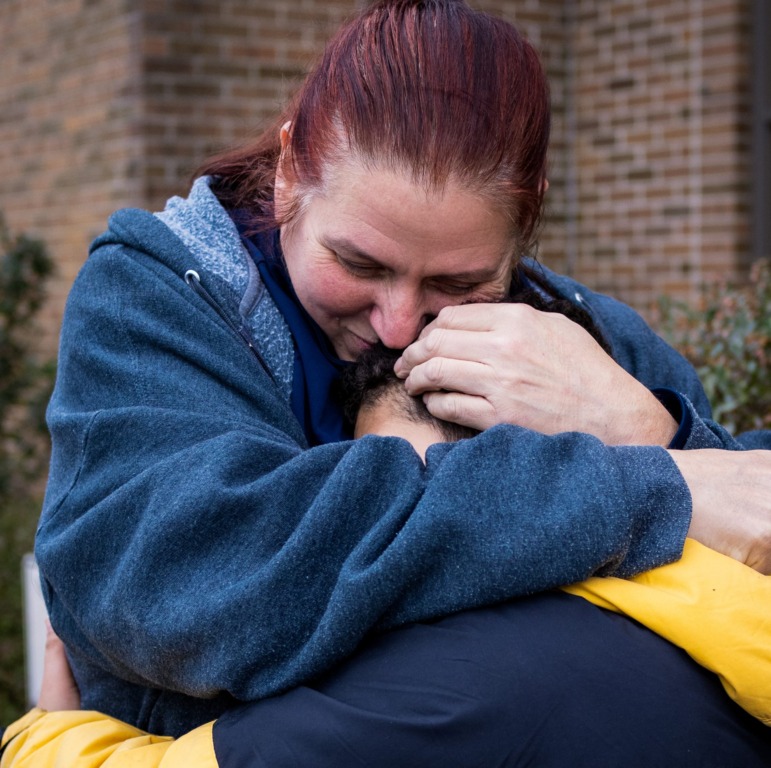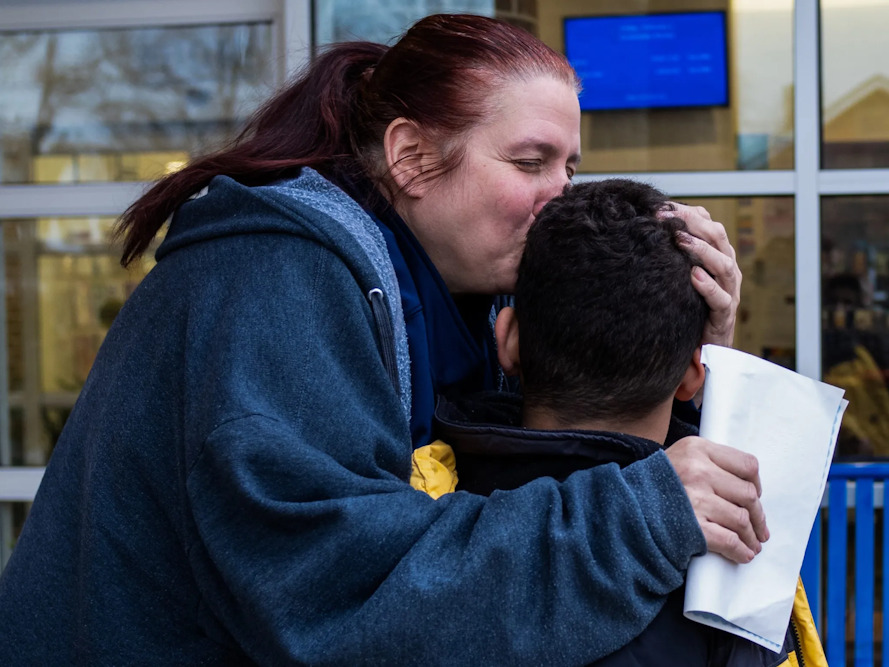This story was produced by The Hechinger Report, a nonprofit, nonpartisan news outlet focused on education.
The 9-year-old had been drawing images of guns at school and pretending to point the weapons at other students. He’d become more withdrawn, and had stared angrily at a teacher. The principal suspended him for a week. Educators were unsure whether it was safe for him to return to school — and, if so, how best to support him.
“None of us can predict violence.”
Nancy Rappaport, psychiatrist
So, as schools around the country are increasingly inclined to do amid heightened concern over school violence and threats, administrators sent the child to meet with a psychiatrist. There the child sat, in a chair a bit too big for his small frame, fidgeting as he listened to the psychiatrist over a video call.
“Some people in the school asked me to talk with you to try to figure out how we can make school easier for you and understand what happened,” psychiatrist Nancy Rappaport told him, according to a recording of the call. She had documented the session, anonymizing some details, to share it as a case study with a room full of hundreds of child psychiatrists who faced similar requests.
Psychiatric evaluations are meant to keep students safe
They had come from across the country, gathering at an annual professional meeting of the nation’s child and adolescent psychiatrists last October, to learn how to conduct similar evaluations effectively. Many were seeing more children wind up in their offices and emergency rooms, pushed into psychiatric evaluations by their schools. Sometimes their young patients had made threats or been violent in class. Other times, the catalyst was less clear; perhaps the school had called police to take the child to the hospital during a behavioral or mental health crisis, or told a parent that their child would not be allowed back without a doctor’s sign-off. They needed to know how to respond.
“None of us can predict violence — we don’t really have a future [predicting] ball,” Rappaport, who is also an associate professor in psychiatry at Harvard Medical School, said later. When assessments are deployed well, she explained, they can be essential to preventing violence in schools and mobilizing resources for a struggling student. But determining which child could pose a threat to themselves or others is a delicate process that schools frequently misuse and misunderstand, according to Rappaport and other experts familiar with the process.
Psychiatrists say schools frequently misuse and misunderstand evaluations
Psychiatrists emphasize that schools need well-trained teams of mental health professionals and administrators who work alongside clinicians to assess whether students pose a threat and support children in crises. But, they say, relatively few districts have that level of resources. Instead, schools often offload the responsibility of evaluation and intervention onto outside psychiatrists and even emergency rooms.
“The focus can’t just be on identifying potential school shooters.”
Deborah Weisbrot, clinical psychiatry professor
The practice can keep students out of school for weeks or even months, and cast children into an already-overburdened youth mental health system that families must often navigate without any assistance from schools. Family advocates say that even sending a child to an emergency room for an evaluation can become a days-long ordeal.
Without clear policies, transparency and staff support for schools and clinicians, many experts say these outsourced evaluations can result in a cycle of removals that leave children in crisis and schools with a false sense of security.
“When you ask an emergency room, ‘Is this child safe to be in school?’ it’s the wrong question,” Rappaport said. “It gives the schools a false sense of confidence and, many times, it indicates that the school doesn’t have in place what needs to happen.”
No comprehensive national data exists about how often districts require such evaluations. But for many psychiatrists, the seemingly ever-spreading use of these evaluations without preventive measures or follow-up support for students is setting off alarm bells.
“The focus can’t just be on identifying potential school shooters,” said Deborah Weisbrot, a clinical psychiatry professor at Stony Brook University Medical Center who also helped lead the training session. “The focus needs to be about the underlying mental health and characteristics of all the hundreds and hundreds of kids who make threats, who will never become school shooters, and what are their needs.”
Dorri Auerbach wishes her district had offered that broad focus.
Her grandson, Carter, is a bubbly child with diagnosed ADHD and lots of energy. At the beginning of his first grade year in 2021, Auerbach asked his Long Island elementary school in New York to evaluate him for special education services, but he was found ineligible, according to Auerbach and a school therapist’s report. At school, he did well in math and reading but often struggled to sit still in his chair and became frustrated when he felt misunderstood by other kids, she said. He met regularly with the school therapist to learn better coping strategies.
Then, midway through the school year, things started to go downhill. At times, the 6-year-old became physically aggressive toward other students and threatened to hurt them, according to Auerbach and the report. Twice in the span of two months, administrators at Verne W. Critz Elementary insisted he go to a hospital or crisis center for a psychiatric evaluation; twice he was taken there by police.

Carter spent half a year out of the classroom waiting for a psychiatric evaluation before he could be allowed back into school.
Each time, the process meant an hours-long wait in the local hospital’s psychiatric emergency center. When he was finally seen, the doctor was brief, evaluating the child and clearing him for discharge. And each incident was paired with a suspension — at first just for a few days. But then he was placed on home instruction long-term and prohibited from returning to school “until such time as the District has completed and reviewed the results of a Psychiatric Evaluation,” according to the district’s stipulation notice.
After each incident, it became clear to Auerbach that the school’s approach to supporting Carter wasn’t working. “They promised and promised that they had everything in place,” she said. “And then, when it came down to it, they didn’t know what to do with him and then kicked him out again.”
[Related: Do protocols for school safety infringe on disability rights?]
A spokesperson for the South Country School District said the district cannot comment on individual student matters. The district did not respond to questions about its approach to risk assessments or psychiatric evaluations more generally.
Advocates for families say Auerbach’s experience is increasingly common, as schools face intense pressure to ensure they don’t under-react to students who may make a threat or demonstrate violence.
Evaluations used inequitably
However, data and research that is available show that evaluations have been used inequitably. Some schools send Black children to psychiatric emergency rooms at disproportionately high rates, and disability advocates worry such assessments also frequently target children with special needs and keep them out of the classroom.
“The schools are not doing these types of evaluations or processes preventively and preemptively,” said Dan Stewart, a managing attorney for the National Disability Rights Network. “They’re just telling parents that the kids can’t return.”

Dorri Auerbach was told by her grandson’s school that he needed a full psychiatric evaluation in order to return to the classroom. Child psychiatrists say they are concerned about school districts misusing these evaluations.
That approach, advocates say, can have a detrimental effect on a student’s long-term well-being and academic progress. Oftentimes, the process to ensure communication between schools and hospitals after the referral is murky at best, and non-existent at worst.
“Initially, the response of most schools is that it’s a mental health care emergency, not an education emergency,” said Cheryl Theis, a senior education advocate at the Disability Rights and Education Defense Fund. “And of course, that’s a completely false dichotomy.”
For Carter, the district’s requirement that he receive a full psychiatric evaluation before returning to class kept him out of school for months as a first grader. After his suspension, the district failed to schedule the more thorough psychiatric evaluation, Auerbach said. She reached out to several psychiatrists on her own to arrange an evaluation but was told they weren’t taking new patients — a common occurrence amid a nationwide shortage in child mental healthcare providers.
After five months of Auerbach’s pleas for assistance, and after she got in touch with a local legal advocate, the district re-evaluated Carter’s educational needs. It found him eligible to attend a more-supportive educational program, transferring him to a new school while the thorough psychiatric evaluation remained pending.
[Related: What are wellness rooms, and why do schools need them?]
At that point, half a year had passed since he had last been in a classroom. “This is a kid that needed help,” Auerbach said. “Whatever he was showing you, he needed help. And they failed him.”
Child psychiatrists say evaluations work best when schools are equipped to work with clinicians to help determine how best to support a child and keep a school safe.
In the first study to examine the characteristics of students referred to outpatient threat assessment, published last year, Weisbrot and a team of researchers analyzed more than 150 evaluations of children and teens on Long Island. Only 8 percent of the students were deemed to be potentially dangerous, but most had other educational and psychiatric needs, many of which could be addressed by accommodations such as smaller class sizes or regular meetings with a therapist.

Dorri Auerbach with her grandson, Carter.
When things go right, Weisbrot explained, a child identified for a psychiatric threat assessment might be given further assistance in school and more robust mental health support. The student may also benefit from a special education assessment, or the school may need to intervene in bullying or other dynamics affecting the child’s well-being.
Crucially, these steps would ensure that the psychiatric evaluation is only one part of the process, with schools sharing relevant information with clinicians and implementing further support once a child is discharged. That way, Weisbrot said, “it’s not an endless chain of suspensions and other kinds of disciplinary actions without an intervention for what’s causing these problems.”
Some legislators are also looking into the issue. In New Jersey, a bill first introduced last year would have created a statewide policy on psychiatric clearances of students and require the state’s education department to collect annual data on the number of students removed from school mental health evaluations. The legislation addressed some of the concerns of local parents and advocates, who said such assessments were being used more frequently after students returned to school when pandemic restrictions eased. The bill has not made it out of committee.
[Related: A surprising remedy for teens in mental crisis]
As for Carter, he’s now a third grader in a supportive school on Long Island, where the school day is designed around helping students who may have more educational or behavioral needs. While Auerbach is glad that he has settled into the school, she hopes that at some point down the line, he’ll be able to return to a mainstream class. And she worries about the way the removals and isolation may have already affected Carter — the police taking him to the hospital in a squad car, the long waits to be seen by doctors, and the months out of school.
What haunts her most is the sense that none of this had to happen. If the district had found Carter eligible for special education support earlier, when she first requested the evaluation, perhaps he would have been helped rather than sent to the hospital, she said. And if the school had implemented better interventions after Carter was sent to the hospital, then, maybe he wouldn’t have been suspended.
“I feel that if he had the support before, he probably would have been okay,” Auerbach said. “It wouldn’t have gotten to this point.”
***
Rebecca Redelmeier is a journalist based in Brooklyn covering education, housing, and environmental issues through an accountability lens. Her stories have aired on WNYC's All Things Considered and Morning Edition, and her reporting has been published in The Washington Post, The Intercept, The Globe and Mail, The Verge/Vox, Undark and THE CITY, among other outlets.
This story about psychiatric evaluations was produced by The Hechinger Report, a nonprofit, independent news organization focused on inequality and innovation in education. Sign up for the Hechinger newsletter.
This story also appeared in The Guardian.
